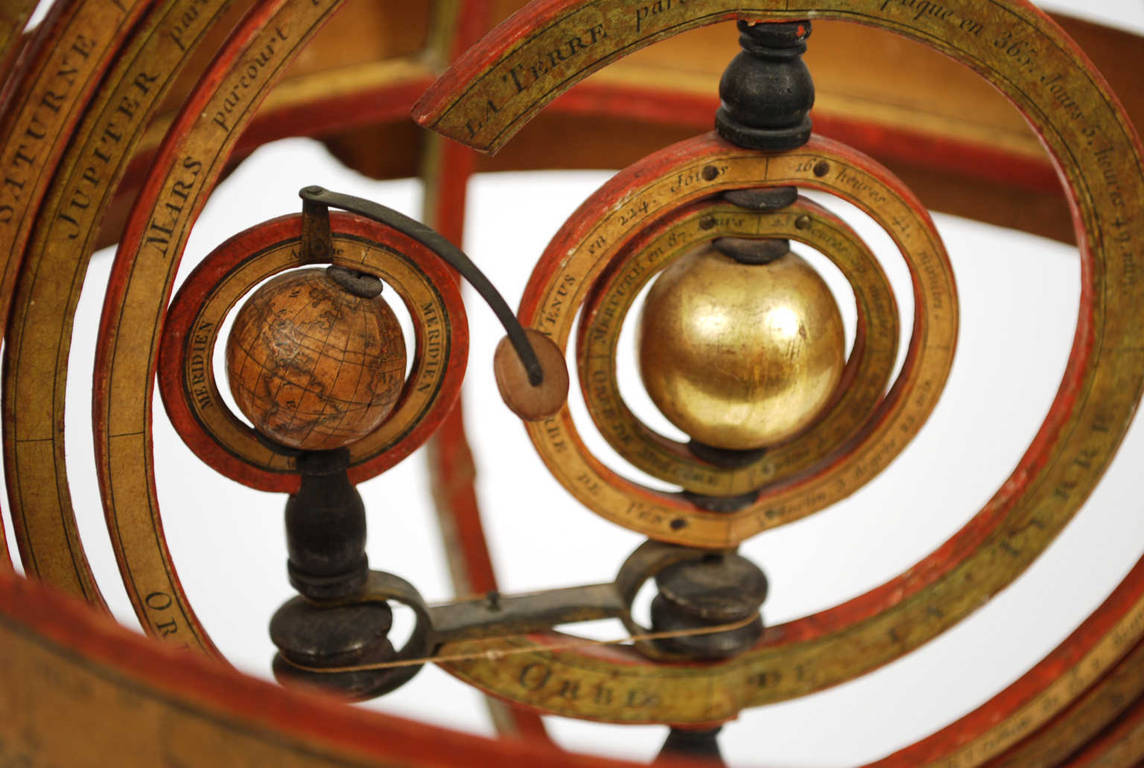6613Code 6613 Antique sextantBurnished brass sextant from the second half of the 19th century signed Frodsham & Keep Liverpool active in 17 South Castle street, Liverpool between 1856-1878 and placed in its beautiful original mahogany wooden box, complete with key lock, hinges, brass hooks and handle. Flap and vernier made of silver, mahogany handle, 3 colored glasses for the fixed mirror and 4 for the movable one, three telescopes, filter, a microscope for reading the vernier, graduated from or to 150 °, pin key for adjustments, mirror of index and horizon. On the outer cover of the box an engraved brass label has the following inscription: H.M.S "CONWAY" The Trinity House Prize presented to C.W.W. HILL July 1921. Box 30x28.5 h 13.4 cm. Excellent condition and fully functional, complete with made-to-measure wooden and brass base.
HMS Conway was a training ship used for naval training. The school was founded in Liverpool in 1857, at the request of the shipowners following the need to have a high level of reliability of the officers of the merchant navy.
The Trinity House Prize was a sextant, awarded annually to the winner of the Kings Gold Medal, one of the prizes established on 4th February 1864 by HM Queen Victoria acknowledging Conway’s achievements. This was the royal announcement: "Her Majesty’s wish in the establishment of this prize is to encourage the boys to acquire and maintain the qualities which will make the finest sailor. They consist of cheerful submission to superiors, self-respect and independence of character, kindness and protection to the weak, readiness to forgive offence, desire to conciliate the differences of others, and above all, fearless devotion to duty, and unflinching truthfulness. The medal will be open to boys who have been one year on board the ship, and have received not less than half the total number of marks at the previous quarterly examinations. The commander, after conferring with the head masters, shall select not less than three, nor more than five of the boys whom he considers to possess the qualities for which the prize is given. He shall then submit these names to the boys who have been assembled for the purpose in the school, and each boy who has been on board six months previously to the time of distribution shall then and there vote for one of the boys so selected. The boy who receives the highest number of votes shall receive the medal. These regulations shall be placed upon a board on the main deck, to be called the Queen’s Prize List, and the name of each boy who receives the medal shall berecorded upon such list." The board, a large framed black board, is now in the Conway Chapel at Birkenhead Priory still recording the names of all the winners on gold lettering.
Among the recipients there is C.W.W. HILL, the winner of the sextant we are selling.
In order to measure a height of a star (for example, the Sun), you have to set the instrument in a vertical plane and, looking through the sight device, to mark out the line of the horizon visible through the non-silvered half of the fixed mirror. Moving the alidade that is together with this mirror, make sure that the light rays coming from the star, and then reflected by the mobile mirror and by the silver half of the fixed mirror, be directed from the fixed mirror to the observer: if you look through the sight device, you see the image of the star, obtained for double reflection, coinciding with the line of the horizon. The height of the star is expressed by the angle whose value is read on the graduated scale. The filter is used when the star is the Sun.


































